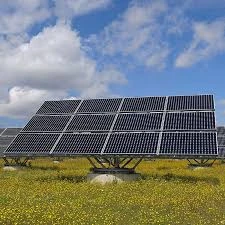Exploring the Growth and Innovation of Micro Inverters in China's Renewable Energy Market
The Rise of Micro Inverters in China's Solar Energy Landscape
In recent years, China has emerged as a global leader in renewable energy, particularly in solar power. With a commitment to sustainability and reducing carbon emissions, China has embraced various solar technologies, among which micro inverters are gaining significant attention. This article explores the rise of micro inverters in China's solar energy market, their advantages, and the implications for the future of renewable energy in the country.
Understanding Micro Inverters
Micro inverters are devices that convert direct current (DC) electricity generated by solar panels into alternating current (AC) electricity used in homes and businesses. Unlike traditional string inverters, which connect multiple solar panels in a series, micro inverters are attached to each individual solar panel. This configuration allows for better energy management and optimization at the panel level.
Advantages of Micro Inverters
One of the primary advantages of micro inverters is their ability to maximize energy production. In a typical solar array with string inverters, the performance of the entire system can be hindered by the weakest panel in the string. Conversely, micro inverters operate independently, ensuring that each panel performs at its highest efficiency regardless of the performance of others. This is particularly beneficial in scenarios with shading or varying panel orientations.
Moreover, micro inverters enhance system reliability and monitoring capabilities. They enable real-time performance tracking and diagnostic capabilities at the panel level, allowing homeowners and operators to identify issues quickly. This leads to reduced maintenance costs and improved system uptime, essential factors in maximizing the return on investment for solar energy systems.
Growing Market Demand in China
micro inverter china

The demand for micro inverters in China is on the rise, driven by several factors. The Chinese government has implemented various incentives to promote solar energy adoption, including subsidies and favorable policies for solar installations. Additionally, with the rapid urbanization and industrialization in the country, there is an increasing need for sustainable energy solutions.
Chinese manufacturers have also stepped up to produce high-quality micro inverters, making them more accessible to consumers. This burgeoning market for micro inverters not only contributes to the growth of the renewable energy sector but also reinforces China's position in the global solar supply chain.
Challenges and Future Outlook
Despite their advantages, micro inverters still face certain challenges in China. The initial cost of installation can be higher compared to traditional string inverters, which might deter some consumers. Additionally, as the technology continues to evolve, ensuring reliability and compatibility with various solar panels remains a priority for manufacturers.
However, the future looks promising for micro inverters in China's solar energy landscape. As innovation continues and manufacturers work to reduce costs, it is likely that more homeowners and businesses will consider micro inverters as a viable option for their solar installations. Furthermore, as the country aims to achieve carbon neutrality by 2060, the adoption of advanced solar technologies like micro inverters will play a crucial role in meeting these ambitious goals.
Conclusion
The increasing prominence of micro inverters in China’s solar energy market signifies a shift towards more efficient and reliable solar solutions. With benefits in energy production, monitoring, and system performance, micro inverters stand out as a compelling choice for both residential and commercial solar installations. As China continues to invest in renewable energy, micro inverters are poised to play a vital role in the nation’s transition to a sustainable energy future.
-
String Solar Inverter: The High-Efficiency Solution for Smart Solar EnergyNewsJul.14,2025
-
Revolutionizing Rooftop Energy with the Power of the Micro Solar InverterNewsJul.14,2025
-
Power Independence with Smart Off Grid Solar Inverter SolutionsNewsJul.14,2025
-
On Grid Solar Inverter: Powering the Future with Smart Grid IntegrationNewsJul.14,2025
-
Monocrystalline Solar Panels: High-Efficiency Power for the Future of Clean EnergyNewsJul.14,2025
-
Bifacial Solar Panel: A Smarter Investment for Next-Generation Energy SystemsNewsJul.14,2025







